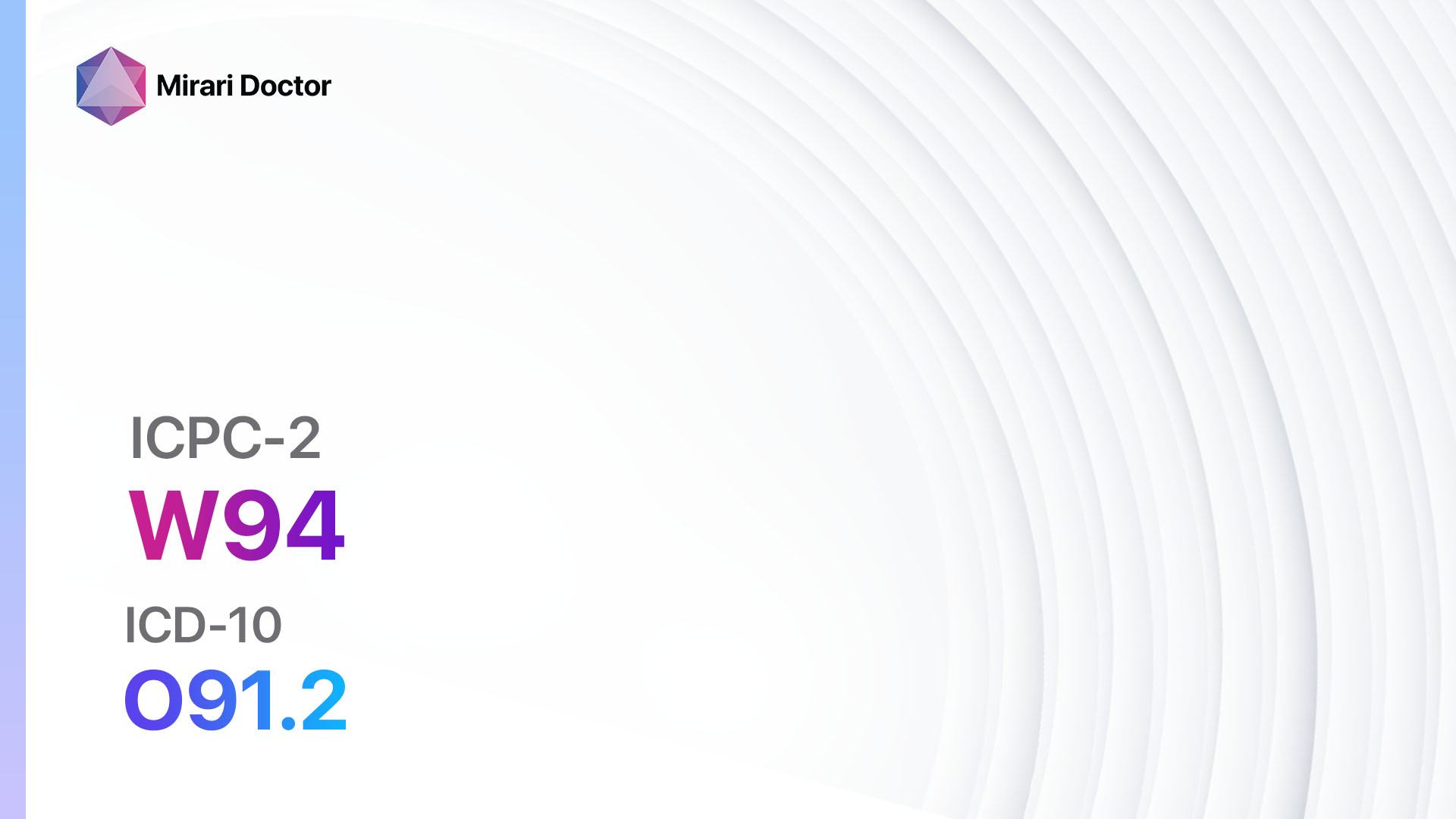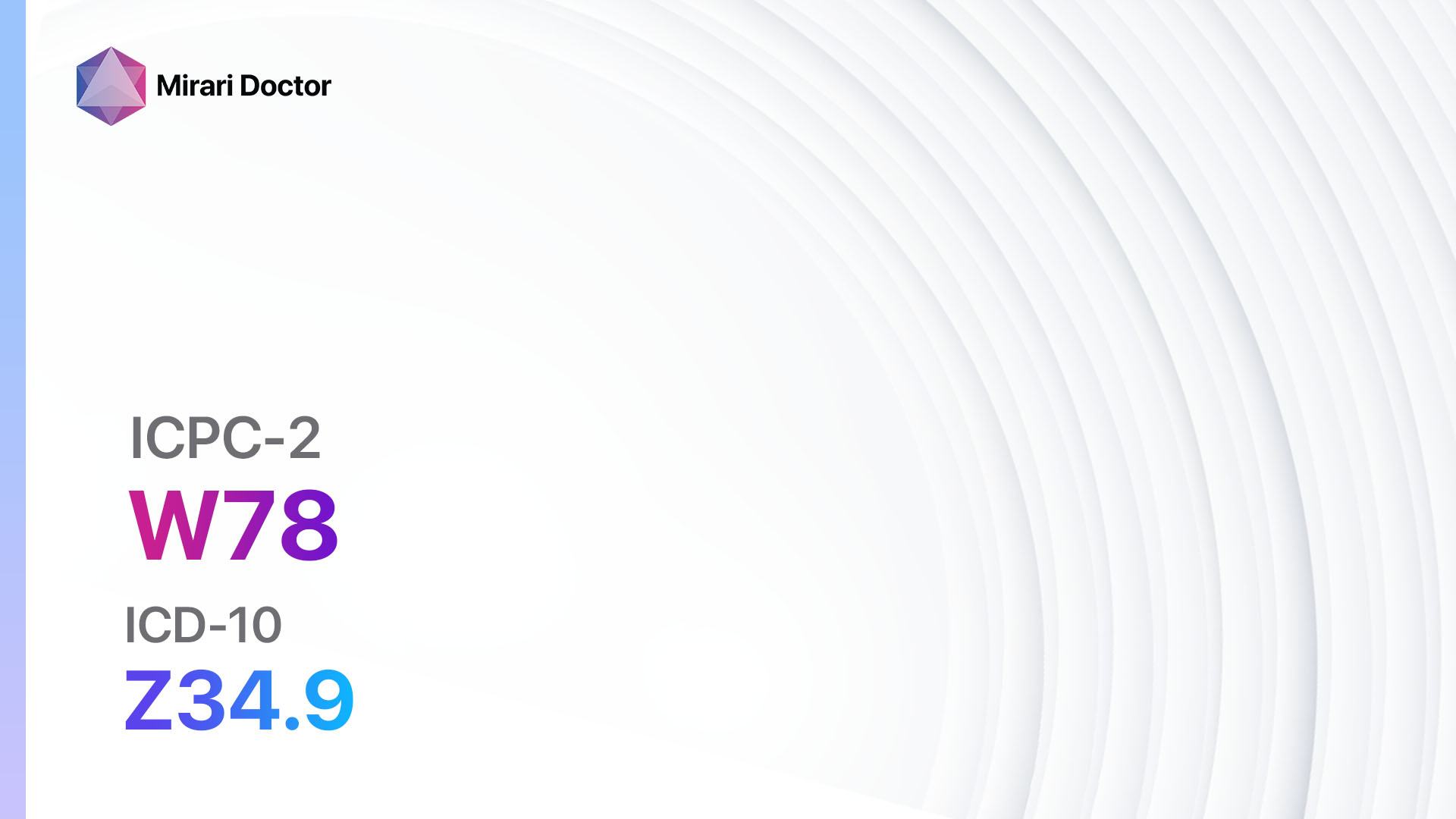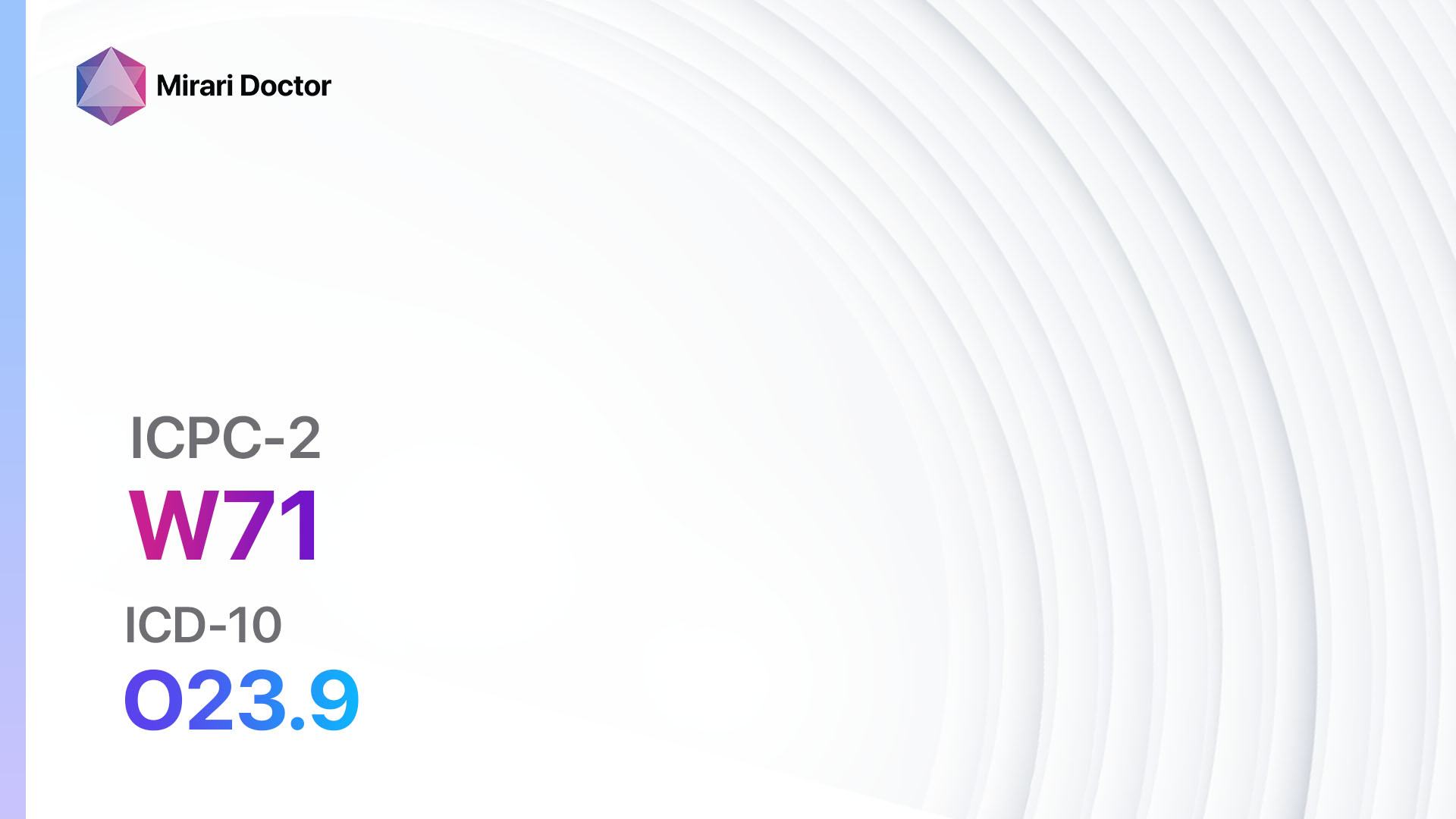
Introduction
Infertility/subfertility refers to the inability to conceive a child after a year of regular unprotected intercourse. It is a significant condition that affects many couples worldwide[1]. The aim of this guide is to provide an overview of the symptoms, causes, diagnostic steps, possible interventions, and lifestyle interventions for infertility/subfertility.
Codes
- ICPC-2 Code: W15 Infertility/subfertility female
- ICD-10 Code: N97.9 Female infertility, unspecified[2]
Symptoms
- Difficulty conceiving after a year of regular unprotected intercourse
- Irregular menstrual cycles
- Painful periods
- Abnormal bleeding
- Hormonal imbalances[3]
Causes
- Ovulation disorders
- Fallopian tube blockage or damage
- Uterine or cervical abnormalities
- Endometriosis
- Male factor infertility (low sperm count, poor sperm motility, abnormal sperm shape)
- Age-related factors
- Chronic medical conditions (e.g., diabetes, thyroid disorders)
- Lifestyle factors (e.g., smoking, excessive alcohol consumption, obesity)[4][5]
Diagnostic Steps
Medical History
- Gather information about the duration of infertility, previous pregnancies, and any known medical conditions or risk factors.
- Ask about the regularity of menstrual cycles and any symptoms related to ovulation or menstruation.
- Inquire about any previous surgeries or procedures related to infertility.
- Assess the presence of any chronic medical conditions or lifestyle factors that may contribute to infertility[6].
Physical Examination
- Perform a general physical examination to assess overall health and identify any physical abnormalities.
- Conduct a pelvic examination to evaluate the reproductive organs for any signs of abnormalities or infections.
- Examine the breasts for signs of hormonal imbalances or abnormalities[7].
Laboratory Tests
- Follicle-stimulating hormone (FSH) levels: Elevated FSH levels may indicate ovarian dysfunction.
- Luteinizing hormone (LH) levels: Abnormal LH levels may suggest ovulation disorders.
- Progesterone levels: Low progesterone levels may indicate inadequate ovulation or luteal phase defects.
- Thyroid-stimulating hormone (TSH) levels: Thyroid disorders can contribute to infertility.
- Prolactin levels: Elevated prolactin levels may interfere with ovulation.
- Anti-Mullerian hormone (AMH) levels: AMH levels can provide an estimate of ovarian reserve.
- Semen analysis: Assess sperm count, motility, and morphology[8].
Diagnostic Imaging
- Transvaginal ultrasound: Evaluate the uterus, fallopian tubes, and ovaries for any structural abnormalities or signs of endometriosis.
- Hysterosalpingography: X-ray imaging to assess the patency of the fallopian tubes and detect any uterine abnormalities.
- Hysteroscopy: Visualize the inside of the uterus to identify any abnormalities or adhesions.
- Laparoscopy: Minimally invasive surgery to examine the pelvic organs and diagnose conditions such as endometriosis or tubal blockage[9].
Other Tests
- Genetic testing: Assess for any genetic abnormalities that may contribute to infertility.
- Postcoital test: Evaluate the interaction between sperm and cervical mucus.
- Endometrial biopsy: Assess the uterine lining for any abnormalities or signs of hormonal imbalances[10].
Follow-up and Patient Education
- Provide counseling and emotional support to the couple.
- Discuss the diagnostic findings and potential treatment options.
- Educate the couple about lifestyle modifications that may improve fertility.
- Schedule follow-up appointments to monitor progress and adjust treatment plans as needed[1][3].
Possible Interventions
Traditional Interventions
Medications:
Top 5 drugs for Infertility/subfertility:
- Clomiphene citrate:
- Cost: $50-$100 per cycle.
- Contraindications: Ovarian cysts, liver disease, abnormal uterine bleeding.
- Side effects: Hot flashes, mood swings, breast tenderness.
- Severe side effects: Ovarian hyperstimulation syndrome, visual disturbances.
- Drug interactions: None significant.
- Warning: Multiple pregnancies may occur.
- Letrozole:
- Cost: $50-$100 per cycle.
- Contraindications: Ovarian cysts, liver disease, abnormal uterine bleeding.
- Side effects: Hot flashes, mood swings, fatigue.
- Severe side effects: None reported.
- Drug interactions: None significant.
- Warning: Multiple pregnancies may occur.
- Gonadotropins (e.g., follicle-stimulating hormone, luteinizing hormone):
- Cost: $500-$1000 per cycle.
- Contraindications: Ovarian cysts, hormone-sensitive tumors, abnormal uterine bleeding.
- Side effects: Injection site reactions, bloating, mood swings.
- Severe side effects: Ovarian hyperstimulation syndrome, multiple pregnancies.
- Drug interactions: None significant.
- Warning: Requires close monitoring and may require ultrasound-guided follicle aspiration.
- Metformin:
- Cost: $10-$50 per month.
- Contraindications: Kidney or liver disease, heart failure.
- Side effects: Nausea, diarrhea, abdominal discomfort.
- Severe side effects: Lactic acidosis (rare).
- Drug interactions: Alcohol, certain medications for diabetes.
- Warning: Monitor kidney function and discontinue use if lactic acidosis is suspected.
- Bromocriptine:
- Cost: $50-$100 per month.
- Contraindications: Hypersensitivity to ergot alkaloids, uncontrolled hypertension.
- Side effects: Nausea, dizziness, fatigue.
- Severe side effects: Hallucinations, pulmonary fibrosis (rare).
- Drug interactions: Antipsychotics, certain antidepressants.
- Warning: Monitor blood pressure and discontinue use if severe adverse effects occur.
Alternative Drugs:
- Lifestyle modifications: Weight loss, smoking cessation, reduction in alcohol consumption, and stress management can improve fertility.
- Assisted reproductive technologies: In vitro fertilization (IVF), intracytoplasmic sperm injection (ICSI), and other advanced techniques may be considered for couples with severe infertility.
Surgical Procedures:
- Laparoscopic surgery: Used to treat conditions such as endometriosis, ovarian cysts, or tubal blockage. Cost: $5,000-$15,000.
- Hysteroscopic surgery: Corrects uterine abnormalities such as polyps or fibroids. Cost: $3,000-$10,000.
- Tubal surgery: Repairs or unblocks fallopian tubes. Cost: $5,000-$15,000.
- Varicocele repair: Corrects varicoceles in the scrotum that may affect sperm production. Cost: $3,000-$10,000.
Alternative Interventions
- Acupuncture: May improve blood flow to the reproductive organs and reduce stress. Cost: $60-$120 per session.
- Herbal supplements: Certain herbs, such as chasteberry and maca root, may have potential benefits for fertility. Cost: Varies depending on the specific supplement.
- Yoga and meditation: Can help reduce stress and promote overall well-being. Cost: Varies depending on the location and type of classes.
- Dietary modifications: A balanced diet rich in fruits, vegetables, whole grains, and lean proteins may improve fertility. Cost: Varies depending on individual food choices.
- Stress reduction techniques: Mindfulness, relaxation exercises, and counseling can help reduce stress levels. Cost: Varies depending on the type of therapy or counseling.
Lifestyle Interventions
- Maintain a healthy weight: Obesity or being underweight can affect fertility. Cost: Varies depending on individual choices and access to healthy food options.
- Stop smoking: Smoking can decrease fertility in both men and women. Cost: Varies depending on individual smoking habits and cessation methods.
- Limit alcohol consumption: Excessive alcohol intake can impair fertility. Cost: Varies depending on individual alcohol consumption habits.
- Manage stress: Stress can affect hormonal balance and fertility. Cost: Varies depending on the chosen stress management techniques.
- Exercise regularly: Moderate exercise can improve overall health and fertility. Cost: Varies depending on individual choices and access to exercise facilities.
It is important to note that the cost ranges provided are approximate and may vary depending on the location and availability of the interventions.
Mirari Cold Plasma Alternative Intervention
Understanding Mirari Cold Plasma
- Safe and Non-Invasive Treatment: Mirari Cold Plasma is a safe and non-invasive treatment option for various skin conditions. It does not require incisions, minimizing the risk of scarring, bleeding, or tissue damage.
- Efficient Extraction of Foreign Bodies: Mirari Cold Plasma facilitates the removal of foreign bodies from the skin by degrading and dissociating organic matter, allowing easier access and extraction.
- Pain Reduction and Comfort: Mirari Cold Plasma has a local analgesic effect, providing pain relief during the treatment, making it more comfortable for the patient.
- Reduced Risk of Infection: Mirari Cold Plasma has antimicrobial properties, effectively killing bacteria and reducing the risk of infection.
- Accelerated Healing and Minimal Scarring: Mirari Cold Plasma stimulates wound healing and tissue regeneration, reducing healing time and minimizing the formation of scars.
Mirari Cold Plasma Prescription
Video instructions for using Mirari Cold Plasma Device – W15 Infertility/subfertility female (ICD-10:N97.9)
| Mild | Moderate | Severe |
| Mode setting: 2 (Wound Healing) Location: 2 (Prostate & Uterus) Morning: 15 minutes, Evening: 15 minutes |
Mode setting: 2 (Wound Healing) Location: 2 (Prostate & Uterus) Morning: 30 minutes, Lunch: 30 minutes, Evening: 30 minutes |
Mode setting: 2 (Wound Healing) Location: 2 (Prostate & Uterus) Morning: 30 minutes, Lunch: 30 minutes, Evening: 30 minutes |
| Mode setting: 7 (Immunotherapy) Location: 1 (Sacrum) Morning: 15 minutes, Evening: 15 minutes |
Mode setting: 7 (Immunotherapy) Location: 1 (Sacrum) Morning: 30 minutes, Lunch: 30 minutes, Evening: 30 minutes |
Mode setting: 7 (Immunotherapy) Location: 1 (Sacrum) Morning: 30 minutes, Lunch: 30 minutes, Evening: 30 minutes |
| Total Morning: 30 minutes approx. $5 USD, Evening: 30 minutes approx. $5 USD |
Total Morning: 60 minutes approx. $10 USD, Lunch: 60 minutes approx. $10 USD, Evening: 60 minutes approx. $10 USD, |
Total Morning: 60 minutes approx. $10 USD, Lunch: 60 minutes approx. $10 USD, Evening: 60 minutes approx. $10 USD, |
| Usual treatment for 7-60 days approx. $70 USD – $600 USD | Usual treatment for 6-8 weeks approx. $1,260 USD – $1,680 USD |
Usual treatment for 3-6 months approx. $2,700 USD – $5,400 USD
|
 |
|
Use the Mirari Cold Plasma device to treat Infertility/subfertility effectively.
WARNING: MIRARI COLD PLASMA IS DESIGNED FOR THE HUMAN BODY WITHOUT ANY ARTIFICIAL OR THIRD PARTY PRODUCTS. USE OF OTHER PRODUCTS IN COMBINATION WITH MIRARI COLD PLASMA MAY CAUSE UNPREDICTABLE EFFECTS, HARM OR INJURY. PLEASE CONSULT A MEDICAL PROFESSIONAL BEFORE COMBINING ANY OTHER PRODUCTS WITH USE OF MIRARI.
Step 1: Cleanse the Skin
- Start by cleaning the affected area of the skin with a gentle cleanser or mild soap and water. Gently pat the area dry with a clean towel.
Step 2: Prepare the Mirari Cold Plasma device
- Ensure that the Mirari Cold Plasma device is fully charged or has fresh batteries as per the manufacturer’s instructions. Make sure the device is clean and in good working condition.
- Switch on the Mirari device using the power button or by following the specific instructions provided with the device.
- Some Mirari devices may have adjustable settings for intensity or treatment duration. Follow the manufacturer’s instructions to select the appropriate settings based on your needs and the recommended guidelines.
Step 3: Apply the Device
- Place the Mirari device in direct contact with the affected area of the skin. Gently glide or hold the device over the skin surface, ensuring even coverage of the area experiencing.
- Slowly move the Mirari device in a circular motion or follow a specific pattern as indicated in the user manual. This helps ensure thorough treatment coverage.
Step 4: Monitor and Assess:
- Keep track of your progress and evaluate the effectiveness of the Mirari device in managing your Infertility/subfertility. If you have any concerns or notice any adverse reactions, consult with your health care professional.
Note
This guide is for informational purposes only and should not replace the advice of a medical professional. Always consult with your healthcare provider or a qualified medical professional for personal advice, diagnosis, or treatment. Do not solely rely on the information presented here for decisions about your health. Use of this information is at your own risk. The authors of this guide, nor any associated entities or platforms, are not responsible for any potential adverse effects or outcomes based on the content.
Mirari Cold Plasma System Disclaimer
- Purpose: The Mirari Cold Plasma System is a Class 2 medical device designed for use by trained healthcare professionals. It is registered for use in Thailand and Vietnam. It is not intended for use outside of these locations.
- Informational Use: The content and information provided with the device are for educational and informational purposes only. They are not a substitute for professional medical advice or care.
- Variable Outcomes: While the device is approved for specific uses, individual outcomes can differ. We do not assert or guarantee specific medical outcomes.
- Consultation: Prior to utilizing the device or making decisions based on its content, it is essential to consult with a Certified Mirari Tele-Therapist and your medical healthcare provider regarding specific protocols.
- Liability: By using this device, users are acknowledging and accepting all potential risks. Neither the manufacturer nor the distributor will be held accountable for any adverse reactions, injuries, or damages stemming from its use.
- Geographical Availability: This device has received approval for designated purposes by the Thai and Vietnam FDA. As of now, outside of Thailand and Vietnam, the Mirari Cold Plasma System is not available for purchase or use.
References
- Zegers-Hochschild, F., et al. (2017). The International Glossary on Infertility and Fertility Care, 2017. Human Reproduction, 32(9), 1786-1801.
- World Health Organization. (2019). International Statistical Classification of Diseases and Related Health Problems (ICD-10).
- American Society for Reproductive Medicine. (2013). Definitions of infertility and recurrent pregnancy loss: a committee opinion. Fertility and Sterility, 99(1), 63.
- Practice Committee of the American Society for Reproductive Medicine. (2015). Diagnostic evaluation of the infertile female: a committee opinion. Fertility and Sterility, 103(6), e44-e50.
- Nicolaou N, et al. (2015). Genetic, environmental, and epigenetic factors involved in CAKUT. Nature Reviews Nephrology, 11(12), 720-731.
- Strassburger, D., et al. (2010). Very low sperm count affects the result of intracytoplasmic sperm injection. Journal of Assisted Reproduction and Genetics, 27(1), 1-4.
- Morey AF, et al. (2014). Urotrauma: AUA guideline. Journal of Urology, 192(2), 327-335.
- Practice Committee of the American Society for Reproductive Medicine. (2015). Diagnostic evaluation of the infertile male: a committee opinion. Fertility and Sterility, 103(3), e18-e25.
- Summerton DJ, et al. (2012). EAU guidelines on iatrogenic trauma. European Urology, 62(4), 628-639.
- Practice Committee of the American Society for Reproductive Medicine. (2015). Current clinical irrelevance of luteal phase deficiency: a committee opinion. Fertility and Sterility, 103(4), e27-e32.
Related articles
Made in USA




























